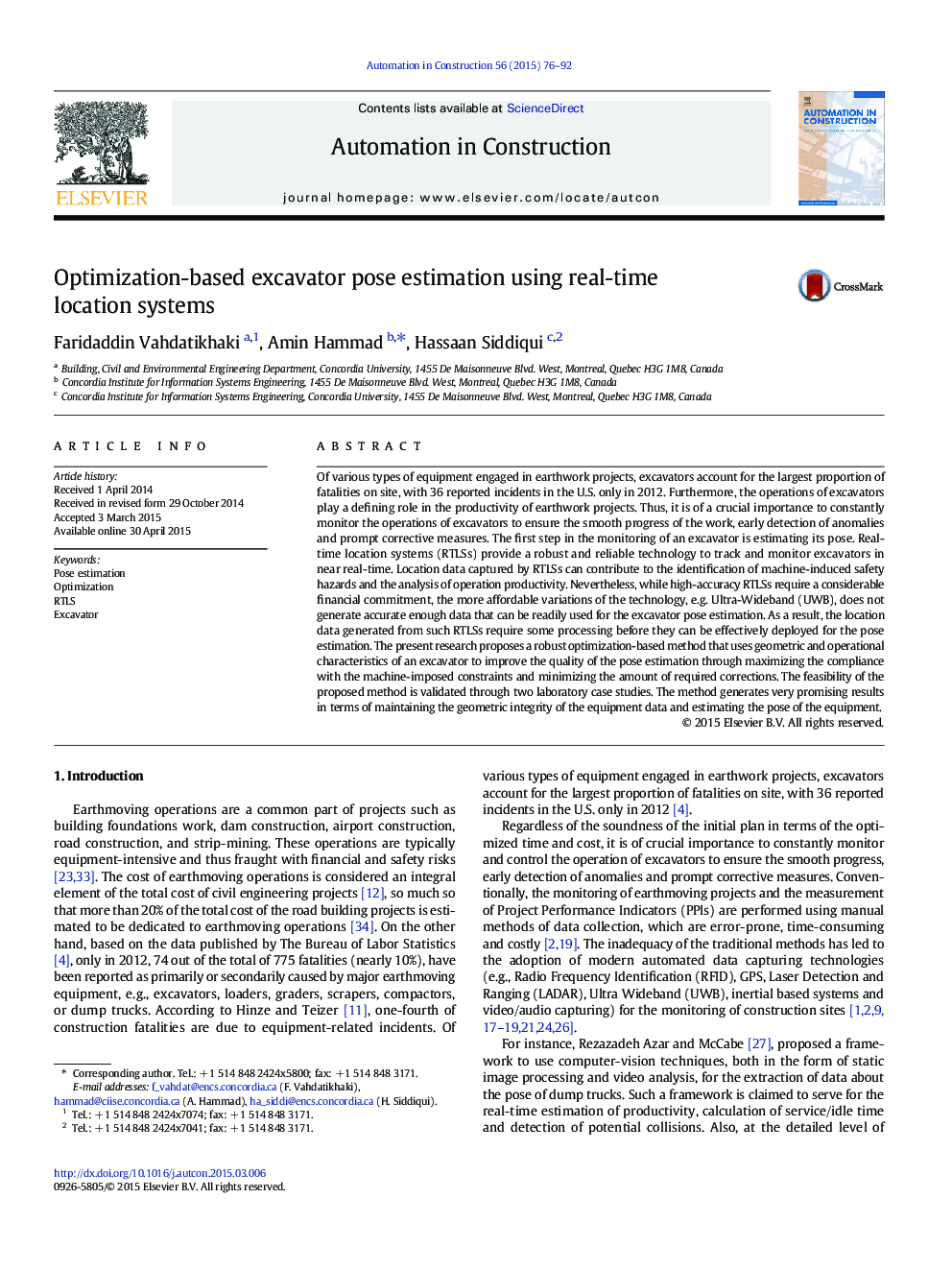| Article ID | Journal | Published Year | Pages | File Type |
|---|---|---|---|---|
| 246424 | Automation in Construction | 2015 | 17 Pages |
•An optimization-based method is proposed for the excavator pose estimation.•The proposed method is based on the application of real-time location systems.•The proposed method can improve the accuracy of excavator pose estimation.•The estimated pose can be used to identify potential collisions with the excavator.•The feasibility of the proposed method is demonstrated through case studies.
Of various types of equipment engaged in earthwork projects, excavators account for the largest proportion of fatalities on site, with 36 reported incidents in the U.S. only in 2012. Furthermore, the operations of excavators play a defining role in the productivity of earthwork projects. Thus, it is of a crucial importance to constantly monitor the operations of excavators to ensure the smooth progress of the work, early detection of anomalies and prompt corrective measures. The first step in the monitoring of an excavator is estimating its pose. Real-time location systems (RTLSs) provide a robust and reliable technology to track and monitor excavators in near real-time. Location data captured by RTLSs can contribute to the identification of machine-induced safety hazards and the analysis of operation productivity. Nevertheless, while high-accuracy RTLSs require a considerable financial commitment, the more affordable variations of the technology, e.g. Ultra-Wideband (UWB), does not generate accurate enough data that can be readily used for the excavator pose estimation. As a result, the location data generated from such RTLSs require some processing before they can be effectively deployed for the pose estimation. The present research proposes a robust optimization-based method that uses geometric and operational characteristics of an excavator to improve the quality of the pose estimation through maximizing the compliance with the machine-imposed constraints and minimizing the amount of required corrections. The feasibility of the proposed method is validated through two laboratory case studies. The method generates very promising results in terms of maintaining the geometric integrity of the equipment data and estimating the pose of the equipment.
Graphical abstractFigure optionsDownload full-size imageDownload as PowerPoint slide
